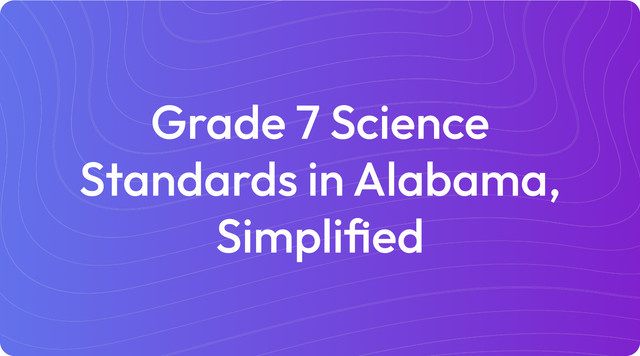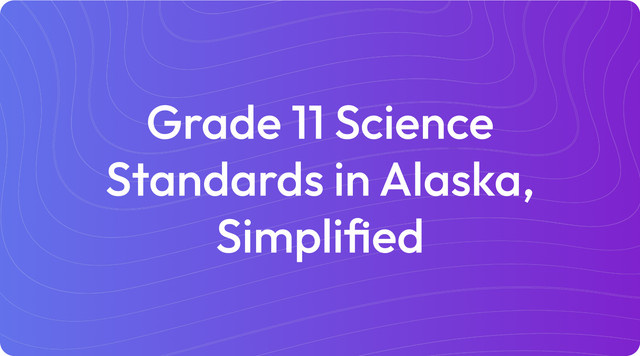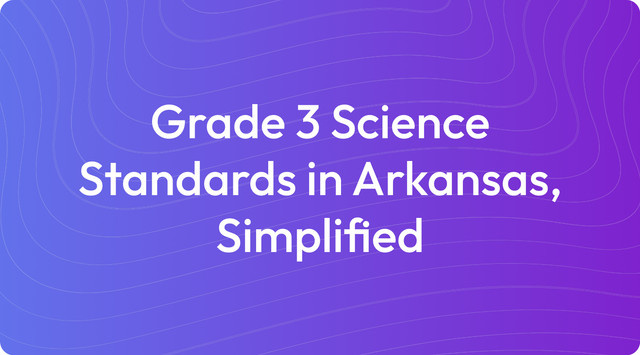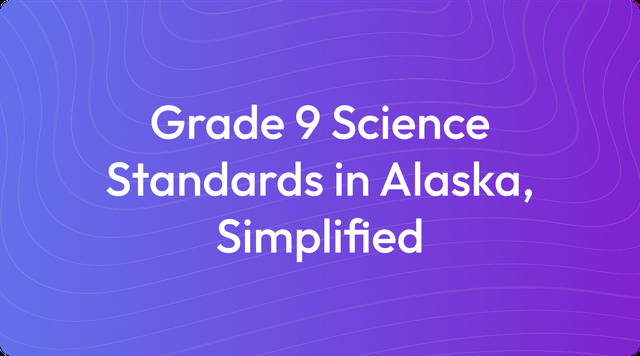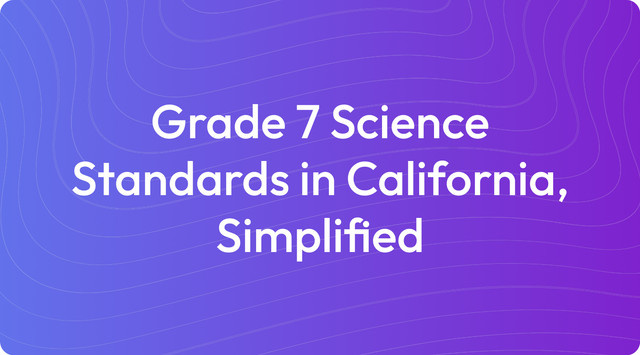Grade 2 Science Standards in Arkansas, Simplified
See how Grade 2 science in Arkansas covers materials, living things, and Earth. For simple standards and fun ideas, read more on TeachShare!
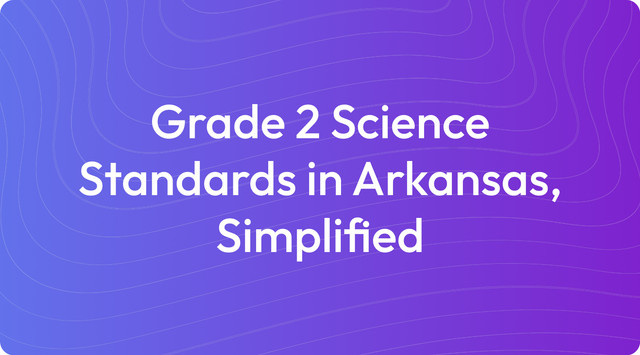
We understand that the demands on educators are significant. Our focus is on providing tools that help simplify your planning and instruction. A key part of this is understanding the role of academic standards in your classroom.
Academic standards are learning goals that specify what students are expected to learn in each subject at a particular grade level. These standards set the expectations for student knowledge, but they do not prescribe specific teaching methods or curriculum. For instance, a second-grade science standard might be to 'describe and classify materials by observable properties,' giving you the flexibility to decide how to teach that concept.
What Are Grade 2 Science Standards in Arkansas?
In Arkansas, the second-grade science standards are organized into three core areas to build a foundational understanding of the world. These learning goals help you structure your lessons around key scientific concepts. The standards cover the following domains:
- Physical Science (PS)
- 2-PS1-1: Describe and classify materials by observable properties
- 2-PS1-2: Test materials to determine which are best suited for specific purposes
- 2-PS1-3: Observe materials undergoing reversible and irreversible changes
- Life Science (LS)
- 2-LS2-1: Investigate how plants depend on water, light, and animals for growth and pollination
- 2-LS4-1: Make observations of plants and animals to compare biodiversity in habitats
- Earth and Space Science (ESS)
- 2-ESS1-1: Use information from fossils to understand past environments
- 2-ESS2-1: Investigate how wind and water shape the land
- 2-ESS2-2: Develop models to represent landforms and water bodies
- 2-ESS2-3: Obtain information to protect Earth’s resources
These standards provide clear learning targets that can be translated into hands-on activities and experiments for your students. You can design lessons where students test different materials or observe biodiversity in the schoolyard.
The framework for these standards is guided by national models from the Next Generation Science Standards and goals set by the Arkansas Division of Elementary and Secondary Education.
Key Tested Standards
In Grade 2 Science for Arkansas, key tested standards often align with foundational concepts important for student progression. Understanding which standards are typically assessed can help you focus your instructional time and better prepare your students. Based on trends, the most likely tested standards are:
- Physical Science (PS):
- 2-PS1-1: Classify materials by their properties (solid, liquid, texture, color, etc)
- 2-PS1-2: Test materials for specific uses (e.g., waterproof, flexibility)
- Life Science (LS):
- 2-LS2-1: Investigate plant needs (water, light) and their connection to animals (pollination, seed dispersal)
- 2-LS4-1: Compare biodiversity in different habitats
- Earth and Space Science (ESS):
- 2-ESS1-1: Understand fossils and what they reveal about Earth’s past
- 2-ESS2-1: Explore how wind and water change landforms
- 2-ESS2-2: Model landforms and water bodies
Source: Next Generation Science Standards. Source: Arkansas Department of Education, Division of Elementary and Secondary Education.
Example Learning Objectives for Unit Planning
Learning objectives translate broad academic standards into clear, student-centered goals for a specific lesson. They define what students should be able to do by the end of your instruction, often framed as "I can" statements. This approach helps focus your teaching and makes learning targets visible to students.
For the Physical Science standard on classifying materials, your objectives could be:
- Standard: 2-PS1-1 (Classify materials by observable properties)
- I can describe objects using properties like color, texture, and weight.
- I can group objects based on how they look, feel, or behave.
- I can explain why objects are grouped together using their properties.
For the Life Science standard on plant needs, objectives might look like this:
- Standard: 2-LS2-1 (Plants depend on water, light, and animals to grow and pollinate)
- I can explain what plants need to grow (water, sunlight, and soil).
- I can describe how animals help plants by pollinating or spreading seeds.
- I can investigate and observe what happens when plants don’t get enough of what they need.
Key Changes & Updates
The Arkansas K-12 Science Standards were updated in 2015 to align with the Next Generation Science Standards (NGSS). This update introduced a focus on three-dimensional learning, which shifts instruction from memorization to application. The goal is to have students actively "do" science by engaging in practices like conducting investigations and designing solutions. It also encourages making connections across different scientific disciplines, such as identifying patterns or cause-and-effect relationships in the natural world.
For second-grade classrooms, these changes brought a greater emphasis on hands-on learning and real-world phenomena. The key updates included:
- A focus on the observable properties of materials
- An emphasis on how plants depend on animals for pollination
- The use of models and investigations to study landforms and habitats
Create with TeachShare
We know that aligning every lesson to specific standards can be time-consuming. Our platform is designed to lighten that load, helping you create engaging, standards-aligned resources in minutes, not hours. You can instantly generate lessons, activities, and assessments tailored to any Arkansas standard, giving you more time to focus on what you do best—teaching. Start creating standards-aligned instructional resources with TeachShare now.
Frequently Asked Questions
To help you get a clearer picture of the Grade 2 science standards, we've answered some common questions:
What are the main topics covered in Grade 2 Science?
The curriculum is built around three core areas. These include Physical Science, where students learn about the properties of different materials; Life Science, which covers how plants and animals interact; and Earth and Space Science, focusing on topics like landforms, habitats, and fossils.
How do the standards encourage hands-on learning?
The standards are designed to get students actively involved in science. You'll see them engaging in activities like sorting materials based on their properties, observing plants and animals in their environments, building models of landforms, and testing different materials to see how they work for specific tasks.
What does "three-dimensional learning" mean?
This approach integrates three key aspects of science education to create a richer learning experience. Here’s how it breaks down:
- Science and Engineering Practices (SEPs): This is the "doing" part of science, where students ask questions, develop models, and conduct investigations.
- Crosscutting Concepts (CCCs): These are overarching themes like "patterns" or "cause and effect" that apply across all scientific disciplines.
- Disciplinary Core Ideas (DCIs): This is the foundational content knowledge specific to physical, life, and earth sciences.
What are some examples of performance expectations?
Performance expectations are the specific skills students should be able to demonstrate. For second graders, these include tasks like:
- Classifying different materials by their observable properties (2-PS1-1).
- Investigating how plants need water and light to grow and how they depend on animals for pollination (2-LS2-1).
- Developing a model to represent the shapes and kinds of land and water in an area (2-ESS2-2).
How do the standards connect science to the real world?
They help students see science all around them. By exploring how materials are chosen for everyday objects, how local ecosystems function, and how the Earth is shaped by natural processes, students build a practical understanding of the world.
Answer



